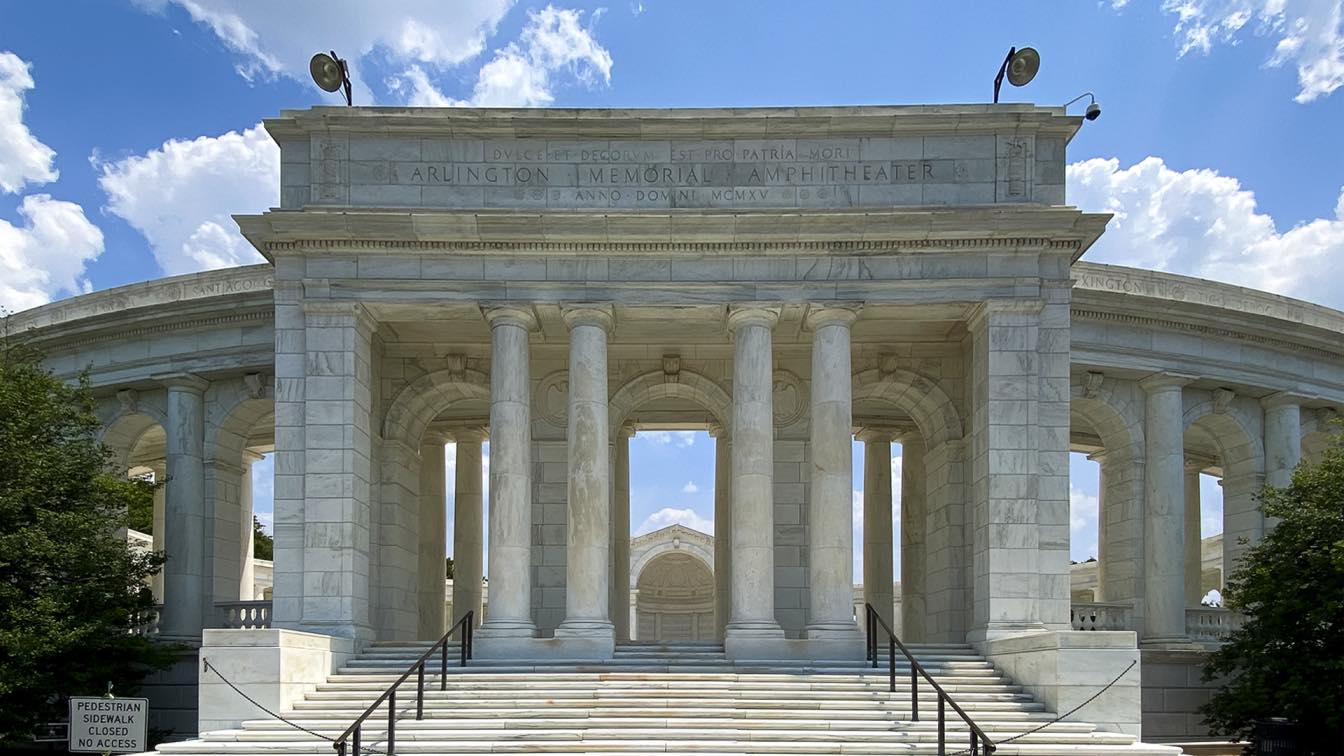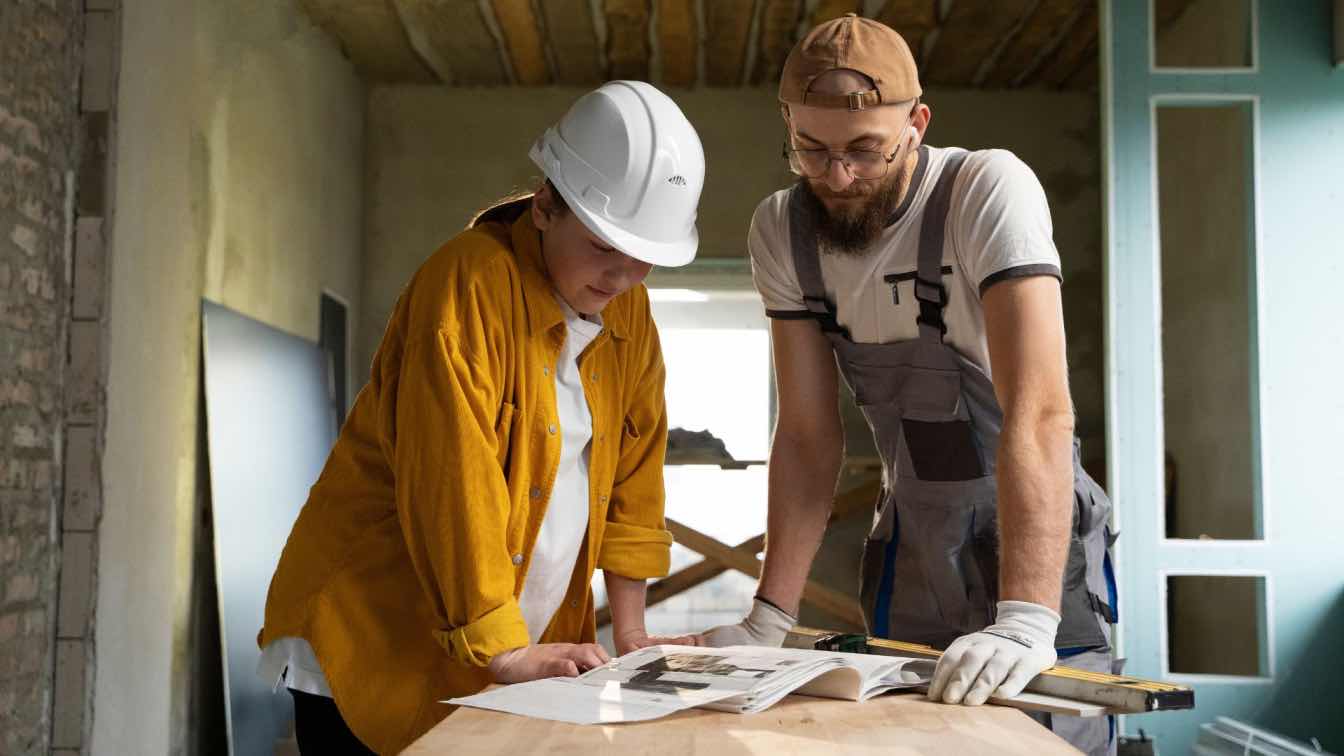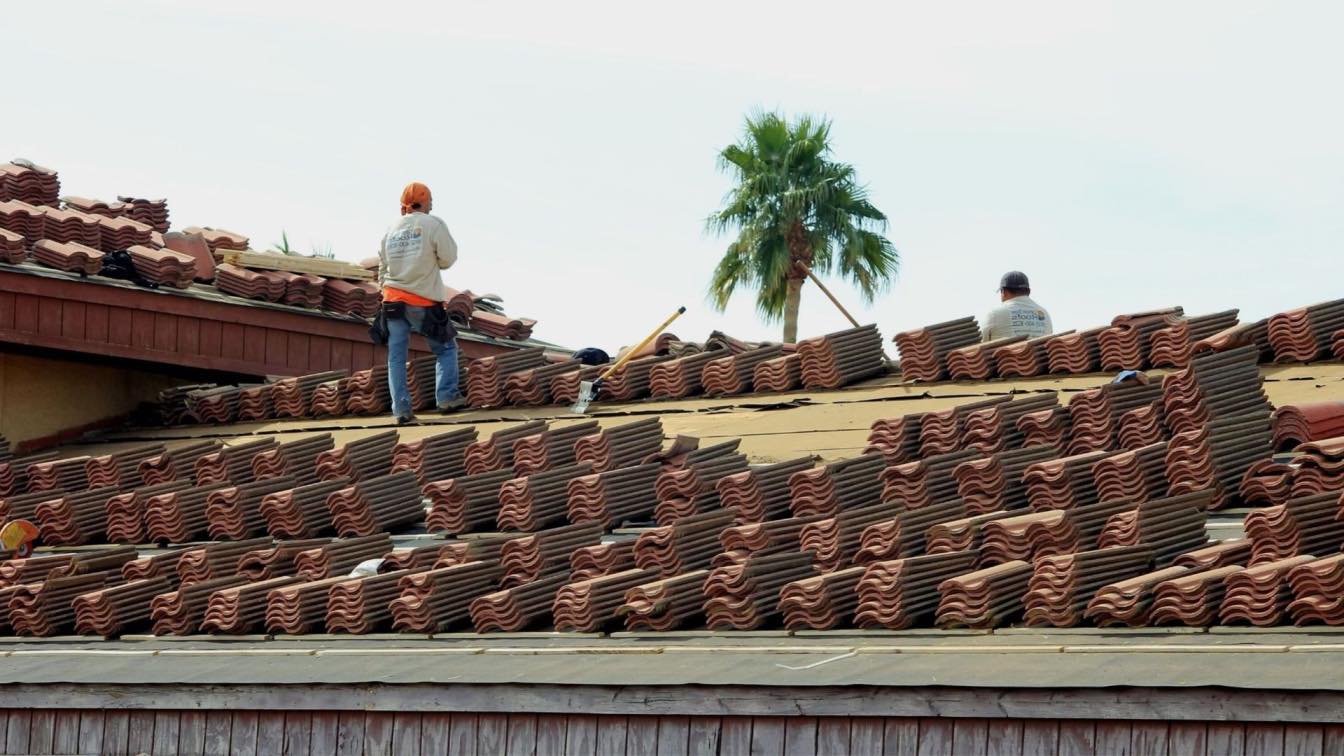How many U.S. sites are so sacred that the public hasn’t walked on them in decades? Not many—and within that minority is the Tomb of the Unknown Soldier plaza at Arlington National Cemetery (ANC).
Before Nov. 9, 2021, the public hadn't been allowed to walk on the Tomb's plaza for many decades. That reality changed when the general public was invited to participate in a series of events honoring the sacred site. On Nov. 9 and 10, veterans and their families, as well as thousands of members of the public, paid their respects to the Unknown Soldiers by laying flowers in front of the Tomb. These events led to the main commemoration on Veterans Day, Nov. 11, 2021: the 100th anniversary of the Tomb of the Unknown Soldier.
This Tomb is a symbolic grave for all U.S. war dead whose remains have not been found or identified. The first Unknown Soldier to be interred in the Tomb fought in World War I. Two additional Unknowns were buried at the Tomb in 1958: one from World War II and one from the Korean War. In 1984, a Vietnam War Unknown was also laid to rest, but his remains were later disinterred and identified as those of Air Force 1st Lt. Michael J. Blassie.
In preparation for the 100th anniversary of the Tomb of the Unknown Soldier, the project delivery team is building a temporary ramp to the Arlington Memorial Amphitheater in Arlington, Va., that complies with ABA and ADA. Image courtesy of Woolpert.
In remembrance of the Unknown Soldiers, President Joseph Biden gave the annual National Veterans Day Observance address in the Memorial Amphitheater, an invitation-only event due to COVID-19 protocols. However, members of the public could witness a special event for the centennial commemoration: a joint full military honors procession throughout the cemetery—meant to evoke elements of the World War I Unknown Soldier's 1921 funeral procession—and a joint service flyover with aircraft from all branches of the military.
To honor such a historical occasion, multiple organizations participated in a collaborative effort to improve the appearance and accessibility of the Memorial Amphitheater. In 2020, the U.S. Army Corps of Engineers (USACE) contracted the Woolpert-RS&H joint venture and Quinn Evans Architects for a rehabilitation project requiring completion prior to the 100th-anniversary commemoration.
"We all understood the importance of completing the rehabilitation project for the 100th anniversary, especially considering the attention it would bring," said Doug Brown, federal market director and vice president at Woolpert. "The amphitheater is an emblem of Arlington National Cemetery, so this anniversary would provide an opportunity for the cemetery staff to make the amphitheater stand out and reflect the amount of care and effort they put into their operation."
 Attendees of the 100th anniversary of the Tomb of the Unknown Soldier line up to enter the restored Arlington Memorial Amphitheater in Arlington, Va., where the event was held. Image courtesy of Woolpert.
Attendees of the 100th anniversary of the Tomb of the Unknown Soldier line up to enter the restored Arlington Memorial Amphitheater in Arlington, Va., where the event was held. Image courtesy of Woolpert.
Shining bright for all to see
One goal of the project was to reduce staining on the Memorial Amphitheater's marble exterior and return it to the white, cohesive appearance intended when the building was constructed. The structure began showing discoloration and alteration just three years after construction was completed. Evidence of these changes had been recorded since 1954, but more detail was captured in 2014 after ANC asked for additional insight from Judy Jacob, senior conservator with the National Park Service (NPS) Northeast Regional Office and Historic Architecture, Conservation and Engineering Center.
"I was on the project delivery team in the very early days when Rebecca Stevens, ANC's cultural resource manager, who's now retired, executed studies with the NPS," said Alice Pool, USACE Norfolk District project manager. "Ms. Stevens had Ms. Jacob do an extensive study concerning the various stains and condition of the marble that makes up the amphitheater."
The investigation identified four primary categories of discoloration. The first was biofilm, a complex colony of microorganisms found primarily in areas where the marble eroded. The second was metal oxides, and three types were discovered on the exterior of the amphitheater: iron oxide, copper oxide and lead oxide. The third category of discoloration was calcium carbonate crusts caused by water that traveled through the cement or uncured mortar and onto the surface. The final was brown and pale-yellow stains of unknown origin.
With the sun setting in the background, this image captures the inside of the restored Arlington Memorial Amphitheater in Arlington, Va. Image courtesy of the Woolpert-RS&H joint venture.
Part of the investigation was to test and recommend potential treatment methods to reduce the visual effect of the discoloration and prevent future developments. For each category of discoloration, a different treatment was recommended, tested and used. Solutions ranged from zinc oxide to mechanical reduction methods such as scraping with hobby knives. The only discoloration that wasn't removed was the stains of unknown origin. However, while the stains weren't eliminated entirely, the final result of treating the Memorial Amphitheater was positive.
"ANC staff are experts in what they do, and they have good experience to pull from, so I think that was the key to our success," Brown said. "The NPS and ANC staff designed and developed the zinc oxide treatment, and it provided some of the best results of the project."
The project delivery team also repointed the structure at ANC’s request. Some of their tasks included replacing mortar, installing lead T-caps, Dutchman repairs, resetting pavers, reducing calcite crusts and much more. The original mortar colors were also replicated and the weather-resistant properties were improved. With the treating and repointing of the Memorial Amphitheater, the strengthened site had an improved appearance before the centennial, achieving one of ANC's primary rehabilitation goals.
For the Tomb of the Unknown Soldier’s 100th anniversary, members of the public honored the sacred site with flowers, reflection and reverence. Image courtesy of the Woolpert-RS&H joint venture.
Everyone gets a seat
In addition to treating and repointing the Memorial Amphitheater, a second project was happening simultaneously to accomplish ANC’s final objective: improving accessibility on the colonnade level. This was a critical undertaking given that the amphitheater did not include any accessibility options when it was dedicated in 1920.
ANC's specific hope was to provide Architectural Barriers Act (ABA) access and seating on the colonnade level. To achieve the first part of that goal, ANC envisioned a temporary ramp to replace an outdated elevator that served as the only accessible path to the colonnade level of the Memorial Amphitheater. Bo Jun, ANC's project manager, came up with the concept design for the ramp to the colonnade level of the Memorial Amphitheater.
From there, the Woolpert-RS&H design team brought the concept to life. The team expanded on the design with a single switch-back ramp, compliant with ABA and Americans with Disabilities Act (ADA) regulations and incorporating materials approved by ANC and USACE. However, the ramp couldn't just enhance accessibility to the colonnade level and comply with regulatory standards—it also had to look good.
 This photo showcases an entrance to the Arlington Memorial Amphitheater in Arlington, Va., and spotlights the structure's restored brilliant white marble. Image courtesy of Woolpert.
This photo showcases an entrance to the Arlington Memorial Amphitheater in Arlington, Va., and spotlights the structure's restored brilliant white marble. Image courtesy of Woolpert.
"The ramp’s design was influenced by the Department of Historical Resources and the Commission of Fine Arts, and it didn't distract from the structure's beauty," said Donna Hammerstein, structural engineer on the Woolpert-RS&H design team. "The ramp had to have an understated elegance."
Maintaining this elegance required the design team to attach stainless-steel cable guardrails to the temporary concrete ramp for a dignified aesthetic that complemented, rather than competed with, the historical construction. Once that was complete, the next step in improving colonnade-level accessibility began: providing additional accessible seating.
"The colonnade level of the amphitheater had existing box seating (some of which was accessible), but we had to make it level to deliver wheelchair-accessible box seating," Hammerstein explained. "To achieve that objective, we removed the existing marble and raised the floor to match the colonnade level. Afterward, we reused the existing marble where possible. We also designed bronze handrails at an ADA-appropriate height to match the existing handrails and provide an unobscured view of the amphitheater for people in wheelchairs."
According to Pool, the finished result of the temporary ramp and accessible seating was exactly what ANC wanted. When discussing the rehabilitation project, she said, "In the end, we have a beautiful, functional ramp that allows people with mobility challenges to rise to the colonnade level, see the bowl of the amphitheater and continue to the reception building to see the main display room."
During the 100th anniversary of the Tomb of the Unknown Soldier at the Arlington Memorial Amphitheater in Arlington, Va., members of the public used a temporary ramp to access the historical amphitheater. Image courtesy of Woolpert.
Crossing the finish line
Even though the rehabilitation project was a success, crossing the finish line required everyone involved to jump over multiple hurdles, the tallest being the tight timeline.
"The deadline was our greatest challenge, even though we were greatly aided by the COVID-19 pandemic since there was restricted public access." Pool said. "The centennial of the Tomb of the Unknown Soldier was coming, and we could not miss it."
Completing everything on time was particularly hard because of a regular ceremony at ANC. On top of guarding the Tomb of the Unknown Soldier 24 hours a day without fail, the Tomb Sentinels also participate in the Changing of the Guard. This ceremony happens when the Sentinel changes and consists of marching past the grave markers of the Unknown Soldiers. This specific ceremony happens every 30 minutes during the summer and every hour in the winter.
Because the Changing of the Guard is open to the public, it was important for the project delivery team to work quietly and move construction equipment between ceremonies to prevent any disruption to the Tomb Sentinels’ duties or public acts of reverence.
"When you do work at Arlington National Cemetery, you have to make sure no one notices what you're doing so that they can maintain the ceremonies for the fallen military members," said Richard Hammett, architect and federal market director at RS&H. "It presents a challenge because we want to honor the high level of quality that they have for their mission. That means we have to be very reverent in the way we approach our work, especially when we are directly adjacent to their activity."
 Soldiers, veterans and members of the public gather inside the Arlington Memorial Amphitheater in Arlington, Va., to honor the 100th anniversary of the Tomb of the Unknown Soldier. Image courtesy of the Woolpert-RS&H joint venture.
Soldiers, veterans and members of the public gather inside the Arlington Memorial Amphitheater in Arlington, Va., to honor the 100th anniversary of the Tomb of the Unknown Soldier. Image courtesy of the Woolpert-RS&H joint venture.
The Changing of the Guard ceremony takes about 10 minutes, leaving the project delivery team with relatively little time to work uninterrupted. This reality meant delays were possible, but the team was diligent in assessing their challenges and progress to stay on track with their deadline.
"We conducted risk analysis sessions often during the design phase to be certain we were tracking everything that might impede progress for the design and during construction," Pool explained. "We involved the key members of ANC's engineering staff, horticulture, the Tomb Guard and ANC office in charge of special ceremonies and wreath laying to be certain that the plans and specs reflected the needs of the people who were going to be near or at the construction site every day. We also had input from the USACE Northern Virginia Area office, which oversees all the construction for projects at ANC."
By performing risk analysis and tracking potential challenges, the team was equipped to hit the critical milestones necessary to meet their target deadline. ANC was also closed to the public for a period in 2020 because of the COVID-19 pandemic. Construction was underway when the cemetery closed, helping to reduce complications in meeting the deadline. However, one of the biggest reasons the team stayed committed to finishing the project on time was because they felt honored to participate in a meaningful initiative.
"It's one of those things where the challenge is welcome because of the pride we all take in being able to support what happens at ANC," Hammett said. "It's very easy to feel honored to be a part of this, so everyone rose to the challenge. It was a personal mission for each of us."
Taken from the colonnade level, this image showcases some of the accessible seating added to the Arlington Memorial Amphitheater in Arlington, Va., as well as the significant size of the structure. Image courtesy of Woolpert.
A rare but meaningful moment
Preparing for the 100th anniversary came with understandable challenges, but the dedication and collaboration of the project delivery team enabled the Memorial Amphitheater to showcase its brilliant architecture and provide access to anyone who wanted to visit.
"The benefit of collaborating with all of the people on the project delivery team was that we had expertise on all facets of the project that ultimately led to a successful outcome," Pool said.
The opportunity to achieve this positive result was also an honor for those who participated in rehabilitating the amphitheater.
"My husband is a Navy veteran," Hammerstein said. "My father and grandfather are also veterans, so it was great to be a part of this."
Hammett shares a similar sentiment, having grown up near a military cemetery and a national cemetery. His grandfather helped manage a veteran's administration, and Hammett was raised to respect soldiers and their commitment to service before retirement or being interred in flag-draped cemeteries. Having the chance to work on projects that harken back to his childhood instills pride.
For the rehabilitation project, one of the primary goals was to reduce staining on the Memorial Amphitheater’s marble exterior. Image courtesy of Four Tribes Construction Services.
"By working on the project at Arlington National Cemetery, I added a great deal of pride to family members who are also interred at national cemeteries," Hammett explained. "Being able to provide historic architectural services in this location as an architect has also brought a great deal of pride because we're working on something that's almost a pinnacle of our careers. Everyone knows this amphitheater; everyone has seen this space. It’s important. So, it's like a capstone on your career to be able to say you worked on something that was that important to the nation."
When Brown was asked what it meant to work on the project, he also demonstrated a deep connection and reverence for it.
"It was very gratifying to work on this project because I grew up in the D.C. area as the son of an Army officer, who was stationed at the Pentagon, so I've been to Arlington National Cemetery at least a dozen times," Brown said. "My whole family is deeply rooted in the military, leading me to join the Air Force, further reinforcing my understanding of the cemetery’s history and importance. I have a deep personal connection to Arlington National Cemetery. It's a place of beauty and peace."
Members of the project delivery team—including Brown, Hammett and Hammerstein–were among many who attended the 100th anniversary of the Tomb of the Unknown Soldier. Being able to honor the Unknown Soldiers with veterans and the general public is an opportunity the team cherishes and deeply appreciates.
One of the tasks for the project delivery team was to determine potential treatment methods to decrease discoloration and prevent future developments. A different treatment was recommended, tested and used for each category of discoloration. Image courtesy of Four Tribes Construction Services.
There were four primary categories of discoloration on the Memorial Amphitheater: biofilm, metal oxides, calcium carbonate crusts and brown and pale-yellow stains of unknown origin. Image courtesy of Four Tribes Construction Services.
Some of the treatments used to reduce the appearance of the discoloration included zinc oxide and mechanical reduction methods. Image courtesy of Four Tribes Construction Services.
Author: Woolpert Engineer Team Leader, Rebecca Knolle, works out of Woolpert’s Dayton, Ohio, headquarters. She is a military veteran.





